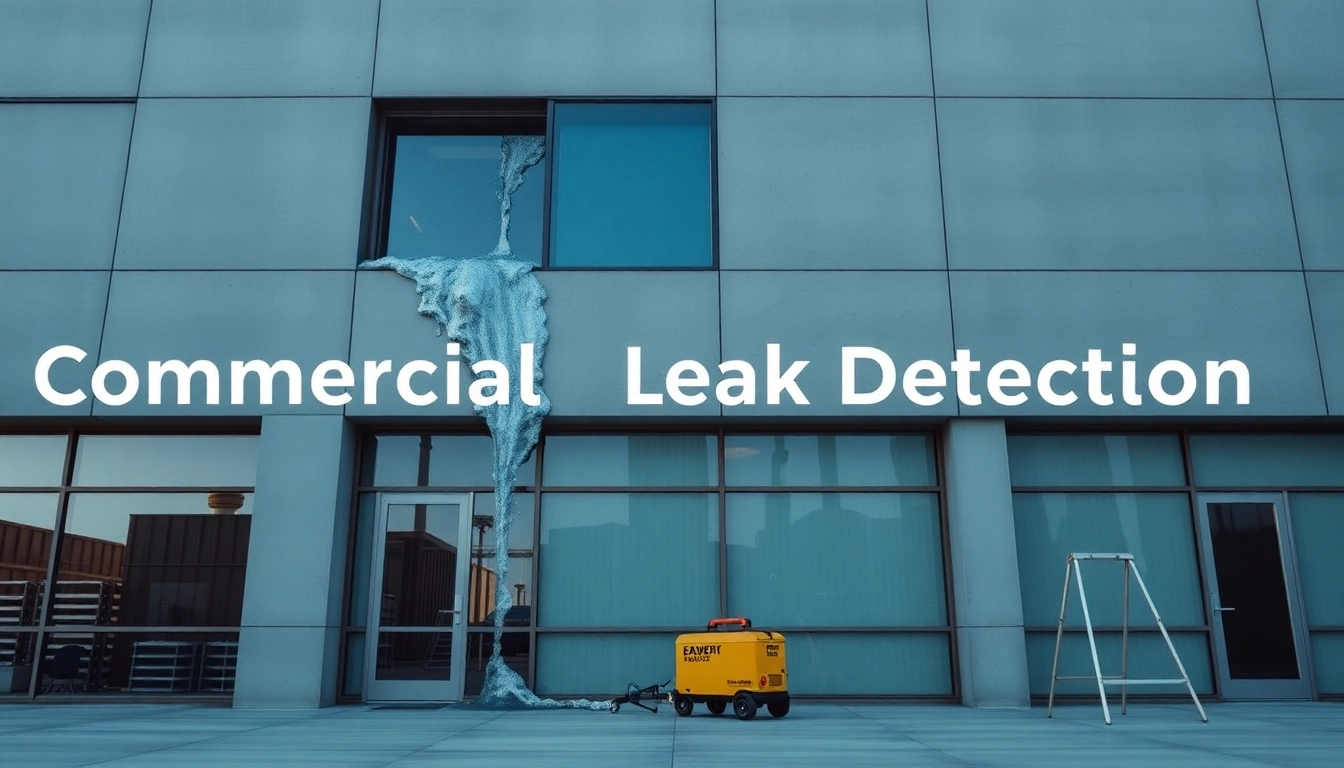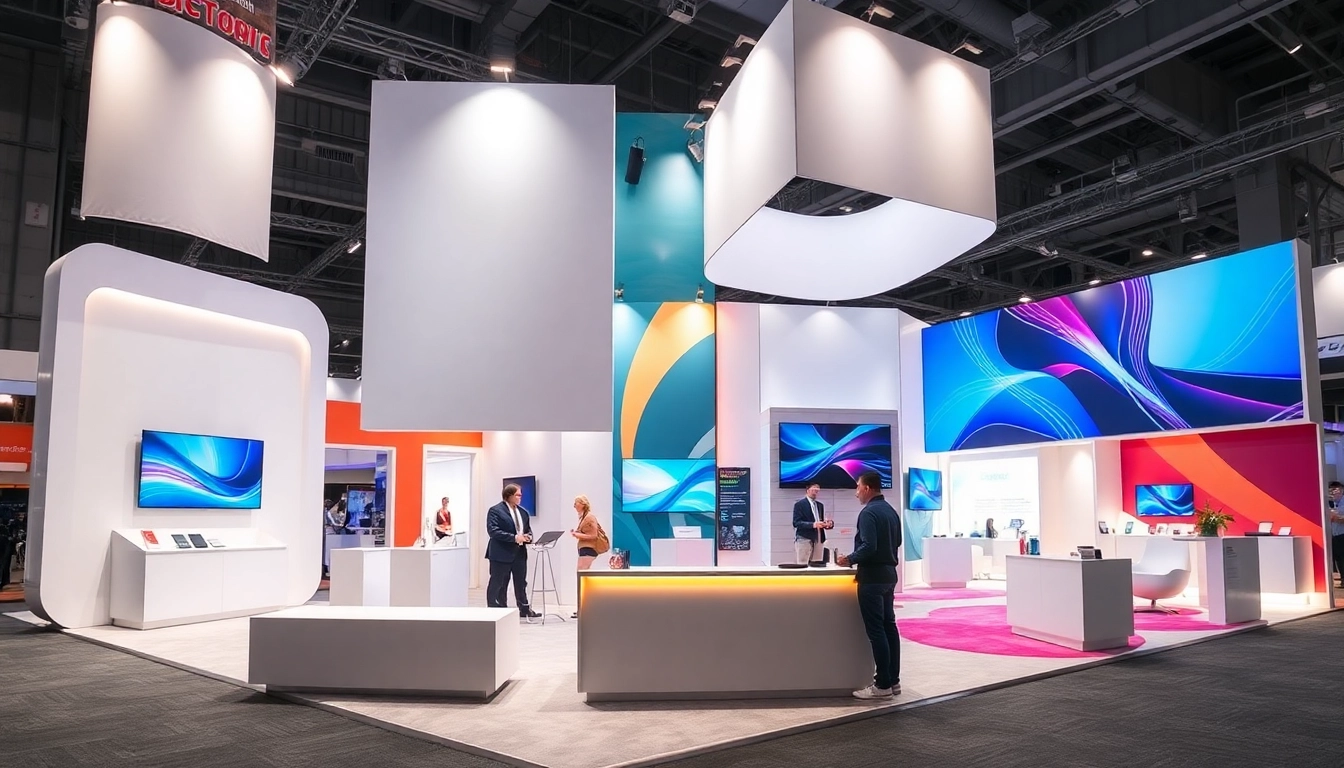Understanding Commercial Leak Detection
What is Commercial Leak Detection?
Commercial leak detection refers to a systematic approach of identifying and monitoring water leaks in commercial properties, such as office buildings, retail spaces, and industrial facilities. The technology utilizes various methods and tools to detect leaks at the initial stages, preventing extensive damage and costly repairs. As businesses face increasing operational costs, effective leak detection has become essential in protecting valuable assets and ensuring uninterrupted operations. By investing in Commercial Leak Detection systems, businesses can safeguard against water-related losses and maintain structural integrity.
Importance of Commercial Leak Detection
Water damage poses significant threats to commercial properties, impacting not only the physical structure but also the overall business operations. Detecting leaks early plays a crucial role in minimizing potential disasters that arise from water damage, such as mold growth, foundation issues, and degradation of electrical systems. These risks can lead to increased insurance premiums, legal liabilities, and diminished property value.
Furthermore, effective leak detection systems can prevent downtime, allowing businesses to maintain continuous operations without interruptions caused by water damage. This not only assures operational efficiency but also enhances the safety of employees and customers. For companies concerned about sustainability, leak detection contributes to water conservation efforts by reducing wastage.
Types of Commercial Leak Detection Technologies
There are several types of leak detection technologies employed in commercial settings, each serving unique needs:
- Acoustic Sensors: These devices detect the sound of leaks in pipes. By using sensitive microphones, they can pinpoint the exact location and intensity of the leak, providing immediate feedback for timely intervention.
- Infrared Thermography: This technique relies on thermal imaging to identify temperature differences caused by water leaks. Areas affected by moisture will display a different thermal signature compared to their surroundings, making this method effective for spotting leaks in hidden locations.
- Moisture Detectors: Often used in conjunction with other technologies, moisture detectors monitor humidity levels and can alert operators to abnormal moisture patterns that indicate a potential leak.
- Flow Meters: These devices measure the flow of water within a plumbing system. By analyzing flow rates, it’s possible to identify discrepancies that may suggest a leak or failure within the system.
- Video Inspection: Utilizing advanced camera technology, video inspection allows professionals to visually inspect plumbing systems for signs of leaks or blockages without the need for extensive excavations.
Common Challenges in Commercial Leak Detection
Identifying Water Leakage Sources
One of the prominent challenges in commercial leak detection is accurately locating the source of leaks. Complex building designs often involve extensive plumbing networks. As a result, pinpointing the exact location of a leak can prove difficult without the proper tools and systems in place. Leaks can occur in concealed areas, such as behind walls or underneath flooring, further complicating detection efforts.
Impact of Delayed Leak Detection
Delays in detecting leaks can lead to catastrophic consequences. The longer a leak remains unresolved, the greater the potential for damage. Structural integrity may be compromised, leading to safety hazards and potential evacuations. Additionally, the financial repercussions can escalate with mold remediation, repair costs, and the loss of inventory, all contributing to an unfavorable bottom line.
Cost Implications of Not Addressing Leaks
Ignoring water leaks or delaying detection efforts can result in steep financial burdens for businesses. The cost of repairing water damage often significantly exceeds the investment in early detection systems. Without proactive leak detection, businesses face not only immediate repair costs but also long-term implications such as decreased property values and potential regulatory fines for safety violations.
Best Practices for Implementing Commercial Leak Detection
Scheduling Regular Inspections
Regular inspections are fundamental to effective leak detection. By establishing a routine inspection schedule, businesses can detect potential leaks before they escalate into severe problems. Inspections should be comprehensive, assessing visible plumbing and inaccessible areas using advanced technology. Documenting findings during each inspection creates a valuable resource for planning future maintenance and repair efforts.
Utilizing Advanced Detection Systems
Investing in state-of-the-art leak detection systems enables businesses to monitor their properties in real-time. Advanced systems with remote monitoring capabilities can alert personnel to leaks immediately, allowing for swift action. Moreover, integrating analytics into leak detection systems can enhance the overall effectiveness, by identifying patterns and predicting potential issues before they become significant.
Incorporating Smart Technology
The adoption of smart technology in leak detection has transformed the industry. Modern systems incorporate IoT sensors that continuously monitor moisture levels and structural health. These sensors can communicate with property management systems to provide actionable insights proactively. By leveraging smart technology, businesses can automate responses to leaks, minimizing the reliance on staff intervention and reducing the time to remediate problems.
Case Studies on Effective Commercial Leak Detection
Retail Businesses: A Leak Detection Success Story
Consider a national retail chain that faced recurrent water leak issues affecting their store layout and inventory. Following an extensive assessment, they implemented a comprehensive commercial leak detection system equipped with acoustic sensors and moisture detectors. Within the first few months, the sensors identified leakage in storage areas that previously went undetected. The swift response led to minimal disruption, preserving inventory integrity and improving customer satisfaction. Data collected from the system also informed more regular maintenance schedules going forward.
Industrial Applications of Commercial Leak Detection
An industrial plant was experiencing increased operational risks and costs due to undetected leaks in their complex machinery system. They employed infrared thermography combined with flow meters to monitor their entire operation. The results were remarkable; they identified not only leaks but also inefficiencies within their systems. These discoveries resulted in modifications that improved overall operational performance, reduced water usage by 30%, and considerably lowered their utility costs.
Office Buildings: Implementing Best Practices
An office building management team recognized the necessity of establishing preventive measures against possible water damage. They organized regular inspections and incorporated video inspection technology to complement their standard practices. The integration of a real-time monitoring system provided staff with immediate alerts about any detected irregularities. As a result, the management successfully mitigated risks associated with leaks, thereby improving tenant satisfaction and retention rates.
Measuring Effectiveness of Commercial Leak Detection
Key Performance Indicators for Leak Detection
Determining the effectiveness of commercial leak detection systems involves tracking specific key performance indicators (KPIs). Common KPIs include:
- Response Time: The duration taken from the moment a leak is detected until corrective actions are initiated.
- Cost SAVINGS: The financial savings achieved through the implementation of leak detection systems compared to costs incurred due to leak repairs.
- Incident Rate: The frequency of leak-related incidents recorded before and after implementing leak detection measures.
- System Downtime: The amount of time the system was non-functional due to leaks, contributing to overall efficiency losses.
Feedback Mechanisms to Improve Systems
Gathering feedback from stakeholders is crucial for enhancing leak detection systems. Regularly surveying employees, building managers, and maintenance teams can uncover valuable insights regarding the performance of current systems and procedures. Encouraging a culture of reporting any suspicious water incidents allows for continuous improvement and manifests a proactive approach to dealing with leaks.
Future Trends in Commercial Leak Detection
As technology continues to evolve, the future of commercial leak detection will be shaped by several key trends, including:
- Increased Automation: The shift towards fully automated leak detection systems will eliminate the need for manual monitoring, allowing for quicker responses.
- Integration with Building Management Systems: Advanced leak detection systems will interface with comprehensive building management systems to provide insights into overall building health.
- AI and Machine Learning: Utilizing machine learning algorithms will allow systems to analyze data, predict potential leaks, and optimize maintenance schedules.
- Sustainability Focus: Environmental concerns will drive the development of leak detection technologies aimed at reducing water waste and improving sustainability within commercial structures.




